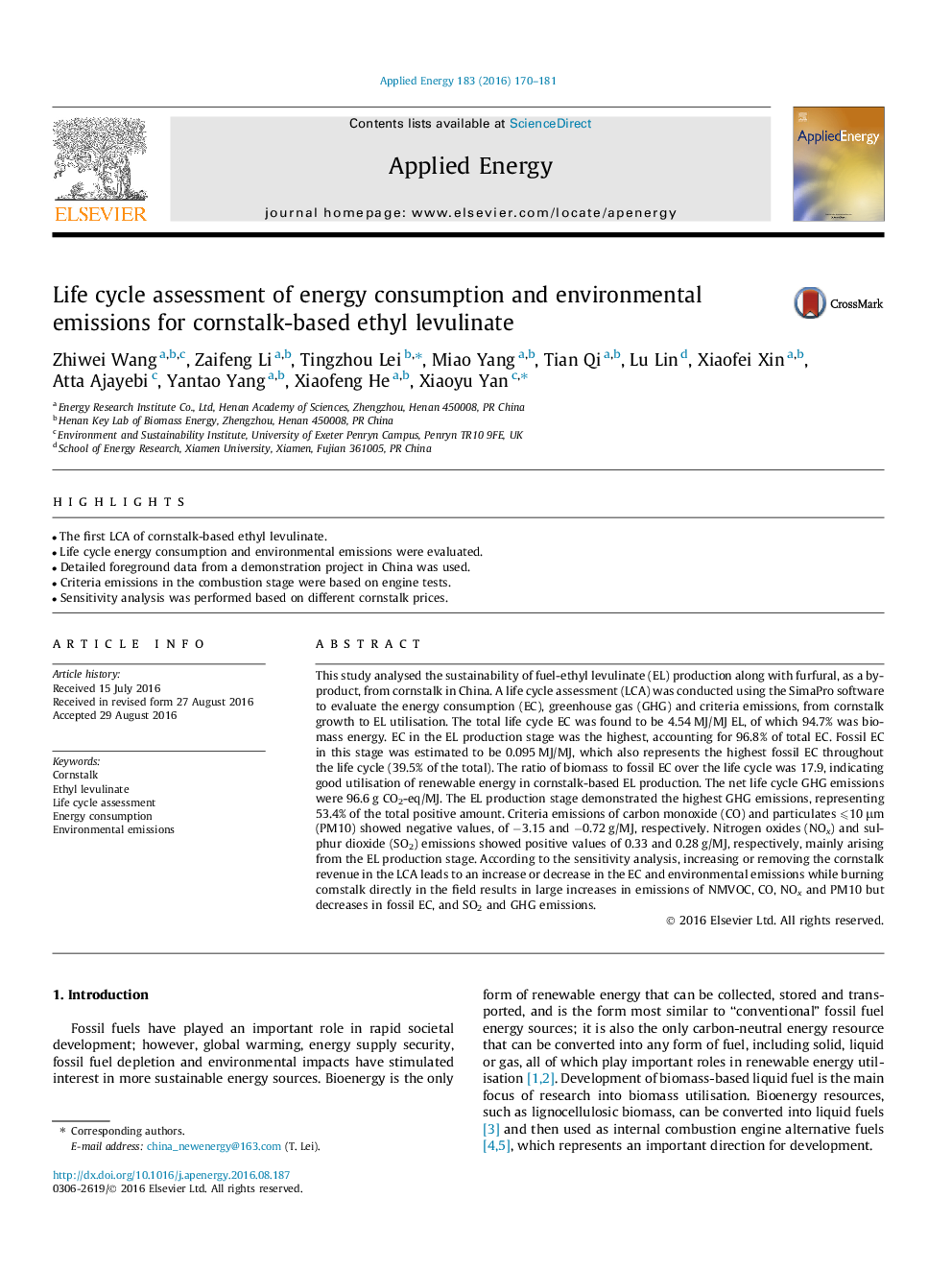| Article ID | Journal | Published Year | Pages | File Type |
|---|---|---|---|---|
| 4916566 | Applied Energy | 2016 | 12 Pages |
Abstract
This study analysed the sustainability of fuel-ethyl levulinate (EL) production along with furfural, as a by-product, from cornstalk in China. A life cycle assessment (LCA) was conducted using the SimaPro software to evaluate the energy consumption (EC), greenhouse gas (GHG) and criteria emissions, from cornstalk growth to EL utilisation. The total life cycle EC was found to be 4.54 MJ/MJ EL, of which 94.7% was biomass energy. EC in the EL production stage was the highest, accounting for 96.8% of total EC. Fossil EC in this stage was estimated to be 0.095 MJ/MJ, which also represents the highest fossil EC throughout the life cycle (39.5% of the total). The ratio of biomass to fossil EC over the life cycle was 17.9, indicating good utilisation of renewable energy in cornstalk-based EL production. The net life cycle GHG emissions were 96.6 g CO2-eq/MJ. The EL production stage demonstrated the highest GHG emissions, representing 53.4% of the total positive amount. Criteria emissions of carbon monoxide (CO) and particulates ⩽10 μm (PM10) showed negative values, of â3.15 and â0.72 g/MJ, respectively. Nitrogen oxides (NOx) and sulphur dioxide (SO2) emissions showed positive values of 0.33 and 0.28 g/MJ, respectively, mainly arising from the EL production stage. According to the sensitivity analysis, increasing or removing the cornstalk revenue in the LCA leads to an increase or decrease in the EC and environmental emissions while burning cornstalk directly in the field results in large increases in emissions of NMVOC, CO, NOx and PM10 but decreases in fossil EC, and SO2 and GHG emissions.
Related Topics
Physical Sciences and Engineering
Energy
Energy Engineering and Power Technology
Authors
Zhiwei Wang, Zaifeng Li, Tingzhou Lei, Miao Yang, Tian Qi, Lu Lin, Xiaofei Xin, Atta Ajayebi, Yantao Yang, Xiaofeng He, Xiaoyu Yan,
